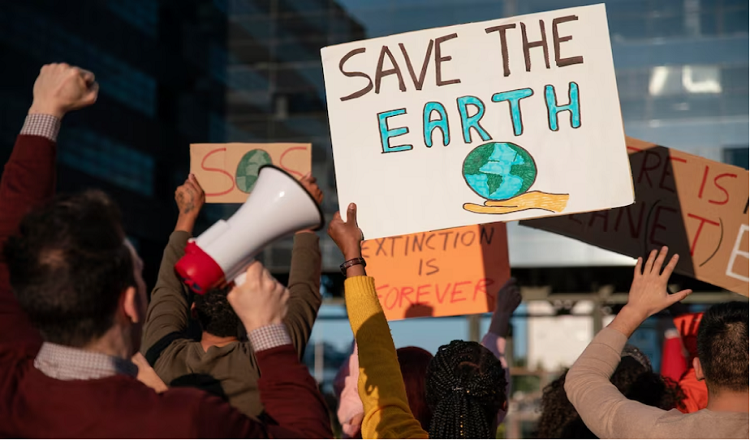The State of Water and Air Quality in the US Examining Efforts to Improve and Protect these vital resources
We are all impacted by the US’s water and air quality situation. Although we frequently take access to clean air and water for granted, it is actually quite important for our health and wellness. Despite this, environmental deterioration continues to endanger the same resources that people rely on for living, making air and water pollution important problems in the US. In this post, we’ll look at the state of the US’s water and air quality as well as the initiatives being taken to enhance and safeguard these priceless resources.
Numerous health issues, including the spread of infections and the tainting of food and water supplies, can be brought on by water pollution. The same is true for heart disease, cancer, and respiratory issues brought on by air pollution. We must talk about the situation of the US’s water and air quality and look into the measures being made to solve these critical implications. In this article, we will look at the trends in air and water quality, talk about the programs being used to enhance them, and emphasize the significance of safeguarding these essential resources for future generations. So have a seat, and let’s explore the intriguing world of US water and air quality!
Current US Water Quality Situation
The quality of the country’s water is currently inconsistent, with some regions showing signs of progress and others still facing serious problems. The Environmental Protection Agency (EPA) recently released a report that found that more than one-third of US rivers and lakes are too polluted to fish in, swim in, or drink from. Furthermore, about 100 million Americans reside in regions where the drinking water is tainted with a variety of toxins, including lead and other dangerous compounds.
The Great Lakes region is one particular area of the US where there are serious problems with water quality. Pollution from industrial waste and agricultural runoff is a major issue in this area. Due to the drought, many communities in the western US are experiencing water shortages and are forced to rely on contaminated sources. High concentrations of arsenic and other pollutants in groundwater have raised more and more concerns throughout the southern US. In general, enhancing water quality in the US continues to be a difficult problem that needs constant attention and action.
Initiatives to Enhance Water Quality
Numerous organizations and government organizations are working together to enhance the quality of the water in the US. The Clean Water Act, which controls pollution discharge into US waters and establishes water quality standards, is a significant undertaking. Additionally, groups like the Environmental Defense Fund (EDF) and the Natural Resources Defense Council (NRDC) have pushed for stronger rules on businesses that pollute the water supply.
The restoration of the Chesapeake Bay, which has experienced a major decrease in nitrogen and phosphorus pollution, is one of the remarkable accomplishments in attempts to enhance water quality. But there are still issues, especially in regions like the Midwest where agricultural runoff is still a significant source of water contamination. Despite these obstacles, maintaining efforts to raise water quality in the US is crucial for maintaining environmental sustainability and safeguarding public health.
Air Quality in the US Currently
Because of the high levels of pollution in many areas, the US’s air quality at the moment is concerning. More than 135 million Americans live in places with harmful levels of air pollution, according to the American Lung Association. This can result in a variety of health difficulties, such as heart disease, respiratory disorders, and even early mortality.
The Los Angeles-Long Beach area, which has the highest level of ozone pollution in the nation, and the Houston area, which has some of the worst levels of particulate matter pollution, are two specific regions of the US that are dealing with serious air quality challenges. Air quality problems are being made worse by climate change, especially in regions that are vulnerable to wildfires, like California and the western United States. Concerns about air quality in the US continue to be a serious issue that calls for sustained action and investment in cleaner technology and policies.
Actions to Enhance Air Quality
Numerous organizations and governmental organizations are working together to enhance the air quality in the US. The Clean Air Act, which controls air pollution and establishes benchmarks for national air quality, is a significant undertaking. Additionally, groups like the Environmental Defense Fund and the American Lung Association have been promoting stricter rules on businesses that produce air pollution.
The elimination of lead and other dangerous air pollutants is one of the major achievements in efforts to enhance air quality. Nevertheless, difficulties persist, particularly in places with heavy traffic and industrial activity. For the protection of public health and to lessen the effects of climate change, ongoing efforts to enhance air quality in the US are crucial. The EPA, the National Institutes of Health, and the Union of Concerned Scientists are a few examples of organizations and governmental bodies engaged in improving air quality.
The Connection Between Air and Water Quality
Water and air quality are intimately connected, with one having a substantial effect on the other. For instance, water pollution can cause the release of toxic chemicals and other pollutants into the air, which can then have an impact on the environment’s air quality and general health. Similar to how acid rain may affect streams and aquatic life, air pollution can also cause it.
One resource may benefit from improvements made to another. For instance, cutting back on emissions from factories and other industrial sources can aid the environment by lowering the quantity of pollutants that end up in rivers while also enhancing air quality. Similar to this, lowering runoff from agricultural activities can assist raise water quality while simultaneously cutting down on air pollution. Overall, effective conservation and management efforts depend on understanding the interrelationship of these resources.
Conclusion
The state of the US’s water and air quality is a serious problem that needs ongoing consideration and action. These essential resources are currently in a worrying state, with many areas suffering from pollution and contamination that could have negative effects on public health. However, there are initiatives and efforts in place to safeguard and improve the quality of the air and water, and there have been accomplishments in lowering dangerous pollutants.
The interdependence of these resources, their effects on one another, and the part that individuals can play in supporting these initiatives must all be understood. By using less water, lowering their carbon footprint, properly disposing of hazardous waste, and supporting laws and organizations that promote cleaner air and water, readers can make a difference.
Assuring the health and wellbeing of both people and the environment in the US requires ongoing efforts to safeguard and improve the country’s water and air quality. We can have a positive impact and guarantee a cleaner, healthier future for everyone if we work together.
Read More You May Like:
- Analyzing US Trends: State Indicators Examined
- Examining Environmental Justice Efforts in the US
- Protecting US Coastal and Ocean Ecosystems
- Climate Change in US: Key Indicators & Impact
- Royal agricultural benevolent institution: Florida department of agricultureExamining Climate Adaptation Efforts in US














Post Comment